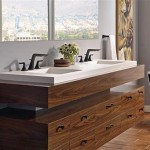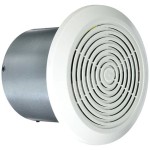How to Choose Bathroom Cabinets
Bathroom cabinets are essential for storage and organization, enhancing both functionality and aesthetics. Selecting the right cabinets can significantly impact the overall look and feel of your bathroom. This guide will provide practical advice and considerations to help you choose the perfect bathroom cabinets for your space.
1. Determine Your Storage Needs
Before browsing cabinets, assess your storage requirements. Consider the items you need to store, such as toiletries, towels, medications, and cleaning supplies. Take stock of your current storage situation and identify any areas where you lack sufficient space. Consider the size of your family and the frequency of use to determine how much storage you will need.
For example, if you have a large family with many toiletries, opting for larger cabinets with multiple shelves and drawers is recommended. If you prefer a minimalist approach, a smaller vanity with a few strategically placed shelves might suffice.
2. Consider Cabinet Style and Material
Bathroom cabinets come in various styles and materials to complement different bathroom designs. Traditional styles often feature ornate detailing and solid wood construction, while modern designs are sleek and minimalist with clean lines and metal accents. Here are some popular choices:
Wood cabinets: These offer durability, warmth, and a natural aesthetic. Popular choices include oak, cherry, and maple, each with unique grains and finishes. However, wood requires regular maintenance to prevent water damage.
Laminate cabinets: An affordable and durable option, laminate cabinets are water-resistant and easy to clean. They come in a wide range of colors and finishes, allowing for greater customization.
Acrylic cabinets: Known for their sleek and modern look, acrylic cabinets are highly resistant to scratches and stains. They are also lightweight and easy to clean.
Metal cabinets: These are durable and moisture-resistant, making them ideal for humid environments. Stainless steel and aluminum are popular choices for their modern appeal.
3. Measure Your Space
Accurate measurements are crucial for ensuring the cabinets fit properly and offer optimal storage space. Begin by measuring the available wall space, considering any obstacles like windows, doors, or pipes. Note the width, depth, and height of the space.
Consider the size of the vanity or sink if you are replacing existing fixtures. If you are designing a new bathroom, measure the area where you plan to install the cabinets. Allow for sufficient walkway space and ensure the cabinets are positioned to maximize accessibility and convenience.
Measure the height of the countertop and the distance between the countertop and the ceiling to determine the optimal size of your upper cabinets. Ensure that the cabinets will not obstruct any windows or light fixtures.
4. Choose the Right Hardware
Cabinet hardware plays a significant role in functionality and aesthetics. Handles, knobs, and pulls can enhance the style of your cabinets and make them easier to open and close. Consider the following factors:
Style: Choose hardware that complements the overall design of your bathroom. For traditional bathrooms, consider ornate handles or knobs, while modern bathrooms may benefit from minimalist pulls or sleek bar handles.
Material: Common hardware materials include brass, nickel, chrome, and stainless steel. These materials can provide durability and a polished look. Consider the finish and the level of maintenance required.
Functionality: Consider the size and shape of the hardware, especially if you have small children or individuals with limited mobility. Choose handles and knobs that are easy to grip and maneuver.
5. Lighting Considerations
Adequate lighting is essential for a functional and visually appealing bathroom. Consider how the cabinets will affect the overall lighting and how light will reflect off the surfaces.
Under-cabinet lighting can provide task lighting for grooming and applying makeup, while overhead lighting can illuminate the entire space. If you are using mirrors, consider using LED lights to ensure even illumination.
6. Budget and Installation
Establish a budget for bathroom cabinets and consider the cost of installation, which can vary depending on the complexity of the project. Pre-assembled cabinets are generally more affordable than custom-built cabinets, but they may offer less flexibility.
If you are hiring a contractor, factor in their labor costs and the cost of any permits required. If you are planning to install the cabinets yourself, ensure you have the necessary tools and skills to avoid potential damage or injuries.
7. Get Inspired
Explore online resources, magazines, and design websites for inspiration and ideas. Examine different cabinet designs, materials, and hardware to gain a better understanding of your preferences. Visiting local showrooms or home improvement stores can provide hands-on experience and help you visualize how different cabinets will fit in your bathroom.
Consider the overall style of your bathroom and choose cabinets that complement the existing fixtures, flooring, and walls. Don't be afraid to experiment with different colors, finishes, and styles to create a unique and personalized bathroom.

Choose Your Bathroom Vanity With These 8 Simple Steps

How To Choose The Perfect Bathroom Vanity For Your Style And Space

Tips To Choose The Right Color When Refinishing Bathroom Cabinets

How To Choose The Right Bathroom Vanity Cabinets Direct Usa

How To Choose The Best Bathroom Vanity For Your Home Lesso Blog

How To Choose The Right Cabinets For Your Bathroom

How To Choose Bathroom Cabinets

Choose Your Bathroom Vanity With These 8 Simple Steps

How To Choose Your Bathroom Cabinets In 6 Steps 2024 Badeloft

Vanities Seven Steps To A Luxurious Retreat Superior Stone Cabinet







